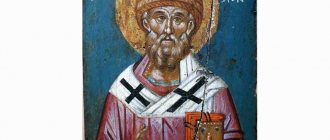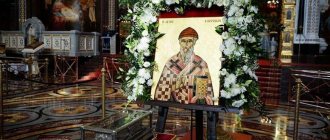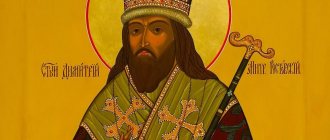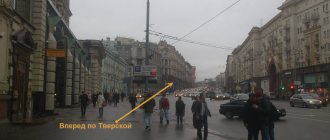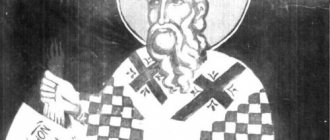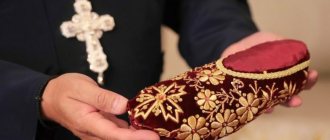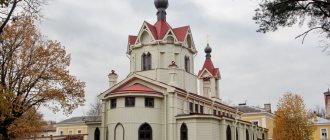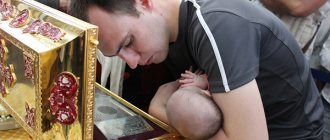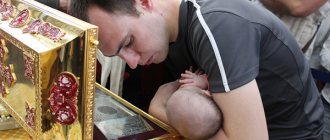Faith in God, which heals and gives strength, has more than once become salvation in the most difficult everyday situations. In the Russian Orthodox Church, one of the most venerable saints is Spyridon of Trimifuntsky.
The life of the miracle worker is marked by a series of great healings that defy simple understanding. Church sources record real deliverances of the righteous from illnesses and even resurrections. Spyridon of Trimifuntsky is also known as an assistant in solving various material problems. Orthodox Christians turn to him with requests for improved housing conditions, when they lack money, or in difficult financial situations.
Shrines of the Venerable Elder
The main miracle for believers is the relics of St. Spyridon of Trimythous. By God's Grace they are incorruptible. Even skeptics and atheists are surprised that the remains of the old man are comparable in weight to the body weight of an adult man. The monk passed away more than 1,700 years ago, but his tissues have not lost their softness, their temperature is equal to that of a human, and the growth of hair and nails has not yet stopped. Numerous studies by scientists have made it possible to determine that this is a real phenomenon for which there is no scientific basis.
History has preserved evidence that Nikolai Vasilyevich Gogol went on a pilgrimage to the relics of the saint. He noted an interesting case: one Englishman (an ardent atheist, by the way), who approached the shrine to see if there was an incision through which the body was embalmed, experienced real horror. In front of all the people, the body slowly rose and turned its back to this atheist. The relics of Saint Spyridon of Trimifuntsky seemed to come to life for a moment to reveal the full power of the Lord’s power. To this day, this fact is recorded as historical.
Where are the relics kept?
Until the mid-7th century, the saint's shrine rested in the Cathedral of the Holy Apostles in the city of Trimifunt, then it was transported to Constantinople. When the Byzantine capital fell under the Turkish onslaught, Priest George Kalocheret, secretly hiding the revered relics of Saint Spyridon of Trimythous, took them to Serbia, and then to Corfu. It is here that they rest today.
It is still unknown when the right hand was separated from the relics. According to evidence that has been preserved, in 1592 it was delivered to Pope Clement the Eighth. In 1606, the shrine was transferred to Cardinal Cesare Baronio, who managed to become known as a famous Catholic church historian. Cesare transferred the right hand to Rome, to the Church of the Mother of God, which was recorded in the archives. There she rested in a gilded cone-shaped vault, the height of which reached one and a half meters. However, through the efforts of the Church of Kerkyra (Corfu), the right hand was returned back in 1984 - this happened just before the day of remembrance of the reverend elder.
The fact that Saint Spyridon is not like the other saints becomes clear even after the first glance at his icon. Ancient saints are most often depicted with their heads uncovered. Such is Chrysostom, such is Basil the Great and many others.
The saints of later eras, in addition to the usual bishop's vestments, have miters on their heads. Theodosius of Chernigov, Tikhon of Zadonsk, and Joasaph of Belgorod are decorated with miters. The list could take a long time. But Spyridon, a contemporary of St. Nicholas the Wonderworker, is not simple-haired, but also not wearing a miter. On his head is a sheep's wool cap. This amazing man was a shepherd for many years, and when the will of God brought him to the episcopal see to shepherd the verbal sheep of Christ, Spyridon did not change his way of life. Peasant food, abstinence in everyday life, reaching the point of poverty, a shepherd’s hat - all this is so unlike the signs of the priesthood. But the inner riches of grace that Spyridon carried within himself forced his contemporaries to remember the names of the prophets Elijah and Elisha.
Bell tower of the Church of St. Spyridon of Trimythous, city of Kerkyra (Corfu island, Greece)
The 4th century, the century of the saint’s life, was the time when the Church, which had calmed down from external persecution, began to be tormented by internal illnesses. False teachings and heresies began to disturb the minds of believers. The era demanded theological feat and defense of the apostolic faith in the refined language of philosophical concepts. Spiridon was least suitable for this. He was a man of prayer, an ascetic, a righteous man, but by no means a scribe or an orator. However, the saint went to the Council of Nicaea, convened by Emperor Constantine regarding the teachings of the Alexandrian presbyter Arius. The heresy of Arius shook the universe. This priest dared to teach that Christ is not God, that He is not equal to the Father, and that there was a time when the Son of God did not exist. Those who carried Christ in their hearts shuddered when they heard such words. But those who had not yet overcome their sinfulness and who trusted their reason and logic too much, took up Aryan blasphemy. There were many of them. Decorated with external knowledge, arrogant and talkative, these philosophers passionately proved their opinions. And Spiridon decided to stand up for the Truth. The Fathers of the Council knew that this bishop in a shepherd's cap was holy, but not skilled in words. They held him back, fearing defeat in the disputes. But Spiridon did something unexpected. He picked up a brick and, having said a prayer, squeezed it in his hands. Glory to Thee, Christ God! Fire flared up in the hands of the holy elder, water flowed, and wet clay remained. The brick, by the power of God, decomposed into its component parts.
Temple of St. Spyridon of Trimifunt (view from St. Spyridon Street)
“Look, philosopher,” Spyridon said boldly to the defender of Arianism, “there is one plintha (brick), but there are three in it: clay, fire and water. So our God is one, but there are three Persons in Him: the Father, the Word and the Spirit.” Earthly wisdom should have fallen silent against such arguments. This is not the only miracle of the saint, and it is not by chance that we mentioned the names of Elijah and Elisha earlier. The great prophets of Israel served God with all their hearts, and God performed amazing miracles through them. The dead were raised, lepers were cleansed, the Jordan was divided in two, the sky was closed for years and refused to rain. It seemed that the Lord at times gave His power over the created world to His chosen ones. The Third and Fourth Books of Kings tell in detail about these miracle workers. Spiridon was like them. The Cypriot farmers were happy to have such a bishop, since heaven obeyed the saint. In case of drought, Spyridon’s prayers inclined God to mercy, and the long-awaited rain watered the earth. Like Elisha, who tested the presence of the spirit of Elijah on himself by dividing the waters of the Jordan (4 Kings 2:14), the saint also commanded the water element. One day he was walking into the city to stand up for an unjustly accused acquaintance, and a flooded stream threatened to block his way. The saint forbade the water in the name of God and continued on his way.
At the entrance to the temple of St. Spyridon of Trimythous, the city of Kerkyra (Corfu island, Greece)
Repeatedly death gave up its prey, and through the prayers of the saint the dead were resurrected. It should be noted that the life of St. Spyridon is not known to us in full, but only in small fragments. And even the little that is known amazes us with the power of the power and glory of God working through this man. Getting to know the saints and all the supernatural things that happened in their lives is a touchstone for the human heart. Obviously, we cannot repeat the life of the great saints. But the joy that such people exist, and the belief that the miracles described are real, suggests that we are of the same spirit. Let them, these holy people, be as full as the sea, and we as full as a thimble, but in us and in them there is the same living water. If a person is skeptical about what he has heard, then it is unlikely that faith in the One for Whom nothing is impossible lives in his heart. Elijah and Elisha are great saints, but the Israelites were not named after them. The father of the people and at the same time the father of all believers is Abraham. It was his incomprehensible devotion to God that became the basis of all subsequent sacred history. One of the main traits that characterized Abraham was mercy and hospitality. When we talk about Spyridon, we always remember the forefather, since the saint became completely like him in his love for the poor and wanderers.
Temple of St. Spyridon of Trimythous, city of Kerkyra (Corfu island, Greece)
Love for people is higher than miracles. The one who can open both his wallet and the doors of his house to those in need, along with his heart, is a true miracle worker. No big miracles are needed. And if they do, then only in the presence of the main miracle - love for humanity. The house of Spyridon of Trimifuntsky was not closed to wanderers. Any poor person could borrow any amount of food from his pantry. The poor man repaid the debt whenever he could. No one stood nearby and controlled the amount taken and returned. At the same time, cruel and selfish people in the person of Spiridon met, as it were, with God Himself, terrible in His justice. The Life describes several cases when the saint punished and shamed merchants who were not ashamed to profit from someone else’s misfortune. It happens that a person needs not so much a Heavenly Father as a Heavenly “Grandfather”, who is forgiving of mistakes and allows him to frolic. Thus, over the centuries, Spiridon’s contemporary, Nicholas the Wonderworker, was dressed as Father Frost and adapted to delivering gifts. But Nikolai not only secretly distributed gifts. At times he could use both power and force against daring sinners. This is how it was during earthly life. This continues today, when the souls of the righteous contemplate the Glory of Christ.
Altar of the Church of St. Spyridon of Trimifuntsky
Spiridon is kind, like Nikolai, and like Nikolai, he is strict. One cannot exist without the other. He who knows how to love the truth knows how to hate lies. A person unjustly persecuted, a person who feels weak and defenseless, in the person of Spiridon can find a strong defender and quick helper. Just let the person asking for help not be unfair to his neighbors, since there is no partiality among the saints of God. Among the joys that the Christian faith gives a person is the joy of finding a sense of family. A believer is never alone. There is always a cloud of witnesses around him (Heb. 12:1). People who lived in different eras and in different places and reached the Heavenly Jerusalem now constitute the church of the firstborn written in Heaven (Heb. 12:23). They watch us with love, always ready, in response to a request, to come to the rescue. One of them is Saint Spyridon, the joy of the Cypriots, the praise of Corfu, a precious adornment to the Universal Church.
Reliquary with the relics of St. Spyridon of Trimythous
Relics of the saint until the second half of the 7th century. rested in the city of Trimifunt, and then, due to Arab raids, they were probably transferred to Constantinople by order of Emperor Justinian II (685–695). In 1453, when the capital of Byzantium fell under the onslaught of the Turks, the priest Gregory Polyeuctus, secretly taking the venerated relics, went first to Thespriotian Paramythia (modern Serbia), and in 1456 brought them to the island of Corfu (Kerkyra in Greek), where they were looking for saving many refugees from Byzantium. In Kerkyra, Polieuctos gave the sacred remains into the possession of his compatriot, the priest George Kalocheretis. The latter bequeathed a valuable treasure to his sons Philip and Luke. Philip's daughter Asimia in 1527 married the Corkyraean Stamatius Voulgaris. Her father inherited the relics of Spyridon, and from then until the 60s of the 20th century, the remains of the saint belonged to the Vulgaris family. At this moment the relics of St. Spyridon of Trimifuntsky belong to the Church of Kerkyra (ed. - the shrine was not immediately transferred to the Holy Metropolis of Kerkyra, Pax and the Diapontine Islands, because in the will of Priest George Kaloheretis it was said that the holy relics would belong to the Kaloheretis family and should be passed on from generation to generation as long as this family will produce one priest from each generation.However, in the 60s of the 20th century, Metropolitan Methodius of Kerkyra did not ordain a single representative of this family as priests, as a result of which the holy relics came into the possession of the Kerkyra Metropolis).
The miraculous relics of St. Spyridon of Trimythous
It is unknown when and for what reasons the right hand was separated from the relics of the saint. According to the testimony of Christodoulus Voulgaris (the great archpriest of Corfu, who lived in the 17th century), in 1592 the right hand was delivered from Constantinople to Rome to Pope Clement VIII, who in 1606 handed over the shrine to Cardinal Cesare Baronio. The cardinal, a famous Catholic church historian, in turn, gave the right hand to the Church of the Mother of God (S. Maria in Vallicella) in Rome, as evidenced by the corresponding entry in the church archives. L. S. Vrokinis, a Greek historian, referring to Christodoulus Voulgaris, wrote that the right hand was in the temple of the Mother of God in a cone-shaped gilded repository of non-Byzantine work, about half a meter high. In November 1984, on the eve of the feast of St. Spyridon, through the efforts of the Metropolitan of Corfu, Paxi and the nearby islands Timothy, the shrine was returned to the Church of Corfu. It is also a miracle that the patron saint of wanderers, St. Spiridnus of Trimifuntsky himself to this day never ceases to “wander,” helping everyone who turns to him with faith in prayer. In the Orthodox world he is revered as a “walking” saint - the velvet shoes worn on his feet wear out and are replaced with new ones several times a year. And the worn-out shoes are cut into pieces and handed over to believers as a great shrine. According to the testimony of Greek clergy, during the “changing of shoes” a response movement is felt. It is impossible to tell about all the miracles that Saint Spyridon performed during his earthly life, but even after death, when he became closer to God, the saint did not stop performing them. Throughout the temple and above the sarcophagus with the relics, “tama” hang on chains, silver plates with a convex image of the figure of the whole person or individual parts of the body: heart, eyes, hands, feet, as well as silver boats, cars, many lamps - these are gifts from people who received healing or help from Saint Spyridon.
The famous velvet shoes of St. Spyridon of Trimythous, which are often changed for him, because... the soles are constantly worn down.
The relics of Saint Spyridon are striking in their very appearance - by God’s Grace they are completely incorruptible. These are amazing relics - they weigh as much as the body of an adult man and miraculously do not lose the properties of living flesh, have the temperature of a human body and remain soft. Until now, scientists from different countries and religions come to Kerkyra in order to study the incorruptible relics of the Saint, but after careful consideration they come to the conclusion that no laws or forces of nature can explain the phenomenon of incorruption of these relics, which have remained intact for almost 1700 years ; that there is no other explanation other than a miracle; that the almighty power of God is undoubtedly at work here. The reliquary with relics has two locks, which can be opened with two keys at the same time. Only two people can open a cancer. And when the key does not turn, it means that Saint Spyridon is “absent” on the island: he is helping someone. This story is retold from mouth to mouth.
Cancer with the relics of St. Spyridon of Trimifuntsky
In Kerkyra, on the day of the blessed death of Saint Spyridon, a solemn celebration is held in his honor and memory: the reliquary with the holy relics of the Saint is carried out from the chapel to a special place near the iconostasis for three days (from Vespers on December 11 (24) to Vespers on December 13 (26), to the right of the local icon of the Savior for veneration and prayer singing to the Saint. There are four more days a year when, according to a long-standing tradition, the memory of the Saint is honored in an unusually colorful and emotional way. An expression of love and gratitude to him is the holding of religious processions with the relics of the Saint (Litanies), which were installed in memory of the miraculous help of St. Spyridon to the inhabitants of the island. Litanies are performed on Palm Sunday (Vayi week), Great (Holy) Saturday, August 11 and the first Sunday in November.
The right hand of St. Spyridon of Trimythous, returned by Catholics in 1984 to the Greek Orthodox Church
On holidays, the relics of the Saint are taken out of the silver shrine and placed in another sarcophagus, where they stand vertically, and when they are returned to the shrine again, they take their previous position. The sarcophagus with the relics of the Saint on a stretcher is carried on the shoulders of four clergymen under a special gold-woven canopy. The holy relics are preceded by bishops, clergy of all ranks, a choir, military brass bands, and candle bearers in ceremonial robes, holding thick candles with a diameter of more than 15 centimeters. They are carried in special belts slung over the shoulder. The ringing of bells floats over the city, marches of brass bands and church chants sound. There are people standing in dense rows on both sides of the street. Along the route there are stops for reading the Gospel, litanies and kneeling prayers. Closer to the temple, many people, hoping to receive healing, go out to the middle of the pavement in front of the procession and lie on their backs, face up, placing their children next to them so that the incorruptible relics of St. Spyridon will be carried over them in the ark.
Procession with the relics of St. Spyridona (Kerkyra, Corfu)
It seems that these days everyone comes out to the streets of the city decorated with flags and flowers: local residents and numerous pilgrims, scout troops and representatives of various branches of the military. Perfect order, goodwill, mutual respect, and sincere empathy for everything that happens reigns everywhere. The police only restrict the entry of cars into those streets along which the religious procession takes place. Anyone who cannot go outside meets Saint Spyridon on the balcony of the house or near the window. The religious procession on August 11 is held in memory of the salvation of Kerkyra from the Turkish invasion in 1716. On June 24, the island was besieged by a fifty-thousand-strong Turkish army; it was blocked from the sea by ships of the Ottoman Porte. Residents of the city, under the leadership of Count Schulenburg, desperately tried to repel the attacks of the infidels with weapons in their hands, but the forces of the defenders were running out after forty-six days of bloody fighting. Women, children and old people gathered in the sacred church of St. Spyridon and prayed on their knees. The Turks had already appointed the day of the general battle, which most likely would have been the last for the townspeople. Suddenly, on the night of August 10, a terrible thunderstorm, unprecedented at this time of year, broke out - the island was literally flooded with torrents of water. At dawn the next day, when the defenders of the island were preparing to enter into a decisive battle, scouts reported that the Agarian trenches were empty and the bodies of drowned soldiers and officers lay everywhere. The survivors, abandoning their weapons and food, in horror, hastily retreated to the sea, trying to get on the ships, but many soldiers and officers were captured. It was they who said that over the walls of the fortress, in a stormy sky, the figure of a warrior suddenly appeared, holding a lighted candle and a sword in one hand, and a cross in the other. A whole host of angels followed him, and together they began to advance and drive the Turks away. Based on the descriptions of the captives, local residents recognized this heavenly warrior as their protector and patron, Saint Spyridon of Trimythous.
Source: https://simvol-veri.ru/xp/gde-jivet-svyatitel-spiridon.html
Corfu - Kerkyra
The relics of St. Spyridon of Trimythous in Corfu are revered by the inhabitants of the island as the main relic. The monk is rightfully considered the heavenly patron of the local population and their patron. The reliquary, located in the saint’s temple, stands in full view, it is decorated with gold and silver gifts. They were presented by those people who received the help of the saint. The shrine is opened exclusively for Orthodox believers; Catholics are prohibited from venerating the relics. There are times when clergy cannot open it. And then they know that the reverend elder is simply not there - he went to help those in need. The holy relics of Spyridon of Trimythous help Christians even now.
The cathedral with the chapel in Corfu is visible from anywhere on the island, because it is located in the very center of the city. In an open shrine, the holy relics of Spyridon of Trimythous are available to Orthodox Christians every day at five o’clock in the evening. Every believer can come and venerate the relic, and pilgrims also receive a piece from the elder’s slippers.
Churches
Afienou has five churches - quite a few by Cypriot standards for a village of its size. Most of them are concentrated in the center. For example, near the old Church of the Virgin Mary, dating back to 1711, there is a large and modern church named in her honor. From this place you can also see the Church of St. George, dated 1880. The bell tower was added to it later - in 1929. The first church opens only for the rite of Baptism. The second (new) one holds services and weddings, but is only open on Sundays. The third is opened only for funeral services.
A little to the side stands the Church of St. Phocas. If there are a great many churches dedicated to the Mother of God and St. George in Cyprus, then the church of St. Foki is the only one in Cyprus named after this saint. If you are going to Cyprus in early October, be sure to visit Athiena. On October 5, a big holiday is held here in honor of St. Phocas, which brings together believers from all over the island.
Well, now let’s move on to one of the most famous shrines of Cyprus - the shoes of St. Spyridon.
Moscow
The relics of St. Spyridon of Trimythous in Moscow, reviews of which have spread throughout the country, are known for their healing power. You can venerate the relic in several churches in the capital.
In 1633-39. in Moscow, with the blessing of Patriarch Filaret, the Church of the Nativity of the Virgin Mary with the chapel of the saint of God was erected on the “Goat Swamp”. The people called the temple that way - Spiridonovsky. This dedication was explained by the fact that in the settlement where the church was located, goats were bred. During his lifetime, the reverend elder was a shepherd and was considered the patron saint of cattle breeding. The temple stood on the corner of the street and alley of the same name, but the holy relics of Spyridon of Trimifuntsky never found their way there. Unfortunately, the religious building was destroyed in 1932, and now there is a residential building on this site.
Today, the throne in honor of the saint has been revived in the Church of the Dormition of the Virgin Mary - in Bolshoy Vasilievsky Lane (house 2/2), not far from Prechistenka. It was first mentioned in 1560, and therefore is considered one of the oldest in the capital. It is believed that the stone church was founded by the grandson of Patriarch Filaret, God’s anointed, Alexei Mikhailovich. This happened around 1650. Two centuries later, the Assumption Church was rebuilt from the very beginning according to the design of the architect Legrand. It was then that a chapel was installed in it in honor of the saint. The temple was closed during the reign of the Bolsheviks, but in the 90s it returned to the fold of the Church and is still open to believers. Now it is called the Church of the Blessed Virgin Mary on Mogiltsy.
The relics of Saint Spyridon of Trimifuntsky in Moscow can be found in the Church of the Resurrection of the Word, which is located on Uspensky Vrazhek, in Bryusovsky Lane, building 15/2. This church was one of the few that was able to survive and remained open during the Soviet period. Here is a revered icon of the saint with a piece of his relics. You can find it in the far part of the temple, but the ark is located in the center of the icon.
The relics of St. Spyridon of Trimythous in Moscow are also in the St. Danilovsky Monastery (Danilovsky Val St., 22). The shoe of God's saint is kept here, and next to it there is an ancient icon where you can pray to the elder for help.
How to get there
Getting here is not very difficult even without a navigator. If you are coming from Limassol, then on the highway at the roundabout in the Larnaca area you need to take the exit towards Ayia Napa and continue driving. After about seven kilometers there will be an exit to Afien, where you need to turn. If you are heading from Protaras or Ayia Napa, then head towards Larnaca. On the approaches to it you will come across exits to Oroklini and Kellia - we don’t need to go there today. But the next congress will be just in time for Afien. If we leave and head in the other direction, we will end up right in the center of Larnaca. So you can combine a trip to Athiena with a visit to Larnaca.
Having left the highway, we now move along a regular road for about 12 km until the turn to the village. Follow the sign to the right. Now all you have to do is drive a kilometer and you will find yourself right in the center of the village in the area of the Churches of the Virgin Mary. Here are the GPS coordinates for a place where you can park your car on the side of the road near them.
35.061000 33.541450 - parking near churches
If you do not turn towards the village, but continue along the road for another hundred meters, there will be a turn on the left to the excavations in Malloura. If you go there, follow the signs along the way. From the turn to the excavations it is approximately four kilometers.
35.028460 33.512280 − Malloura
Now you know how to get here. It remains to see where Athienou is located on the map.
northern capital
In St. Petersburg there were originally four churches of St. Spyridon. All of them were built during the reign of Alexander the First, which turned out to be no coincidence. The emperor was born on the saint's feast day, December 12, according to the old style. The future monarch revered the monk as his heavenly intercessor. The relics of Saint Spyridon of Trimifuntsky have always been kept in St. Petersburg.
The Church of the Saint (Uspensky, also known as Admiralteysky), built according to Montferand's design, was consecrated in 1821, precisely on December 12. Last year it was revived, and for the first time in 90 years the Divine Liturgy was held there. Among the relics of the cathedral, the velvet slipper of Spyridon (with gold embroidery), the pillow that was under the saint’s head for some time, and part of his robe deserve special attention. Orthodox believers visit the temple to kneel before a piece of the relics of the reverend elder. You can find the cathedral at: Admiralteysky proezd, 1.
On Vasilievsky Island, at the intersection of the 19th line and Bolshoy Prospekt, for the centenary of the Finnish Regiment in 1903, the chapel of St. Spiridon, she was assigned to the regimental church. After the revolution, the chapel was closed, but has now been returned to the Orthodox. Every believer can offer petitions here to God and his saint.
The church in Orienbaum was also able to survive. Today, restoration work is underway in the temple, but services have not been suspended. The holy relics were not brought here, but there is another relic here - a piece of the saint’s shoe. The rector of the temple brought it from Corfu. According to custom, the relics of Saint Spyridon of Trimythous in Kerkyra are re-shoeed, and the worn-out shoes are given to the believers. All admirers of the saint believe that when he visits those who need help, he wears out shoes... The same is said about our Saint Sergius of Radonezh.
Excavations at Malloura
Not far from the village of Afienou, in a place called Malloura, excavations of ancient settlements are being carried out. Since 1990, American students from Davidson College have come here in the summer, in the heat of the day, under the leadership of their mentors to comprehend the difficult science of archaeology. They are conducting excavations in this area on an area of approximately 20 square meters. km. But some of them can be viewed now. During a break between the stages of preparing halloumi, Olga brought us here for inspection and showed us the place where buildings are located above several ancient burials, where we went down under her leadership.
You can see the rest of the photographs, like many others about the village of Afienou itself, in our photo album at the end of the story, but for now let’s move on.
Saratov
Shrines of St. Spyridon are often brought to the regions. In 2013, on the eve of the Feast of the Entry into the Temple of the Blessed Virgin Mary, a relic was sent to Russia. Parishioners were able to kneel and pray at the relics of Saint Spyridon of Trimifunt in Saratov. In the city, the relics stayed for 15 days in the Intercession Church. In honor of this important event for all believers, solemn services were held, a prayer service and an akathist were performed under the leadership of the Metropolitan of Saratov and Volsky.
Ekaterinburg
In 2014, the relics were in the Urals. Believers were glad to meet the relics of Saint Spyridon of Trimifunt in Yekaterinburg. Thousands of pilgrims flocked to the city to fall before the reliquaries and pray to the great saint of God. Every Orthodox Christian could venerate the relic for two weeks.
In honor of the fact that the city received the relics of St. Spyridon of Trimythous, several solemn services were held in Yekaterinburg with the participation of numerous believers and pilgrims who arrived from various parts of the country.
Relics of Saint Spyridon of Trimythous. How to ask for help
According to the canons of the Christian faith, asking for financial well-being and other material benefits is not accepted. However, there is an intercessor who helps to find help in financial matters - this is Saint Spyridon. This is a unique case, which, despite the doubts of skeptics, still occurs.
The relics of Saint Spyridon of Trimifunt help to receive the Lord's intercession. How to ask for help? You must venerate the shrine with your lips, bow, cross yourself and say a prayer with pure, heartfelt thoughts.
The servants of the Moscow church, where the saint’s shoe is kept, say that several years ago, when the right hand of the elder was brought to the Danilov Monastery for worship, several miracles were performed. Two women offered up their prayers asking for help. They had to pay the debt for the apartment, approximately 50 thousand rubles. On the way home, they found an envelope containing the required amount - no more, no less. The women are sure: it was the relics of St. Spyridon of Trimythous in Moscow, photos of which will be presented below, that helped in resolving this situation.
With the intercession of the monk, believers successfully exchange apartments, unexpectedly receive new living space, and after lengthy ordeals get a great job. They say that with the help of the elder, many everyday problems can be solved, but the clergy warn: you need to ask wisely. He helps only those who really need it. The relics of Saint Spyridon of Trimifunt in Greece are distinguished by the highest power.
Museums of Afienou
We have already said more than once that almost every Cypriot village has its own museum, or even several. But Afienou is a completely different case. The museum is located in a modern building that was specially built for it. We are talking about the Kallinikeio Museum, named after a very famous icon painter monk in Cyprus, who died just a few years ago. The museum was opened not so long ago - in 2009.
It houses several exhibitions, one of which is closely related to the excavations at Malloura, which we visited a little earlier. Items found in those burials are exhibited here, as well as finds from the Athienou area dating back to Neolithic times (8500-3900 BC).
The second part of the exhibition is dedicated to church art (Ecclesiastical Art) - the cultural heritage of the icon painter Kallinikos Stavrovouniotis, which he donated to the museum during his lifetime. Father Callinikos actively participated in the liberation struggle for the independence of Cyprus from the British in 1955-1959 and even spent three years in prison. By the way, the museum also has a separate exhibition about this historical period in the life of Cyprus. But still, the emphasis is more on the wonderful works of the icon painter. You can see his other creations in our photo album.
In the next room you can find several works by the brothers Georgios and Alkis Kepolas, also natives of Athens. If you have already visited the Kykkos Monastery, then you have probably noticed the many mosaics with which it is decorated on the outside. Some of them are the handiwork of the Kepolas brothers. So you can’t immediately say what is easier to do - paint a picture or lay it out of a mosaic. For us, both options seem difficult, but drawing is somehow more familiar. But putting the “pebbles” together like this seems like a completely impossible task.
In addition to the exhibitions, the museum has a workshop where anyone can try to do something with their own hands, coming here in their free time.
By the way, products made in this “folk” workshop can be bought as an original Cypriot souvenir in the shop at the museum.
Entrance to the museum is paid - 2 €. And now let’s talk about another museum - Olga decided to “open all the cards” to Athienus at once. Our companion this time was an employee of the Kallinikos Museum, who went with us to personally open... “The Old Mill” - that’s how we conventionally called this exhibition. Actually, there once was a mill here, but not that ancient, where the millstones were turned by hand or by the power of water or wind. It’s quite mechanical, but interesting for inquisitive townspeople.
But the “mill” turned out to be not the last point of the museum’s heritage at Afienou. Literally a few steps away from it there is another house-museum. More recently, Father Callinikos himself lived in this house. Now here you can see the workshop where he painted icons, as well as walk through the house itself.
Then we went out into the courtyard, and Olga showed the small production of her “colleagues” - a place where halloumi is sometimes also made, but in a more “village” method for educational purposes, and not on an industrial scale. Here are the vats where the sacrament of cooking takes place. The furnaces that heat the containers are located outside. The heating itself is produced by hot air supplied through special air ducts laid under the floor. Almost like in the Roman baths, which we once observed in ancient Kourion.
But that’s not all (are you tired yet?). There is also another workshop where a local artist (and part-time museum caretaker) conducts art classes for everyone. At the time of our arrival, those interested had not yet gathered, and the caretaker and his friend were enthusiastically... repairing a bicycle. But he kindly allowed us to take pictures in the workshop.
I don’t know about you, but we really enjoyed visiting the village. We said goodbye to Olga and went on our own to walk around the village. But you can do this yourself without us. And if you visit Afiena, like we did in March, you will see lemons blooming in the local park.
So, the story of Athien comes to an end. But what about halloumi, which we included in the title of the story? - you ask. That's right, in the Afienou area there are many farms where herds of goats and sheep graze freely. Milk from these farms is taken to factories located here, and the famous halloumi, anari and other fermented milk products are made from it. But we didn’t want to mix everything up, so we wrote a separate story about halloumi.
For those who are interested in how to “easily and simply” learn how to create mosaics themselves, we suggest watching a short story taken from the official website of George - one of the Kepolas brothers, whom we talked about above, and then look at a photo album about Athienou.
Miracles after the death of an old man
One of the Byzantine emperors, having learned about the righteous life of Bishop Spyridon, gave orders to those close to him that the body of the elder should be dug up and transferred to the tomb of the Church of St. Sophia in Constantinople.
When the remains of the saint were removed from the grave, everyone present froze in surprise. Despite the fact that the body had been in the grave for several decades, it had not undergone any changes. It was as if the venerable elder had been buried yesterday: all his teeth and hair remained intact, his skin was well preserved, and his facial features could be easily recognized.
When the remains of the Most Holy One were moved to Constantinople, the miracles continued. Pilgrims who applied to the cancer received healing. To this day, the relics of St. Spyridon of Trimythous are famous for incredible events. Feedback from pilgrims fully confirms this.
What did people ask and ask the elder for?
If a person is far from God, from everything churchly, the legends about Spiridon’s shoes may seem implausible to him. In the consciousness of a sincere believer, the works of the Lord are closely intertwined with all worldly events. Thus, slippers purchased by one deacon in Corfu as a souvenir turned out to be worn out a year later. All this time they stood near the icon of the monk.
Even during the life of the holy elder, through his prayer, people were delivered from drought, demons were expelled from the possessed, the sick received healing, statues of idolatry were crushed, and the dead were resurrected. One day a grief-stricken woman came to him with a dead baby in her arms. She begged the saint for intercession. After praying, Spiridon, with God’s blessing, brought the child back to life. The mother, shocked, fell lifeless. The monk again raised his hands to the sky and said to her: “Rise up and go!” She rose, as if awakening from sleep, and took her son in her arms.
According to a person’s prayers, according to his thoughts, Spyridon still works miracles. If a believer is pure in soul and makes his requests based on true need, he will be rewarded. By asking for money you can get money, by asking for a job you can get a new place of employment, shelter over your head - your own home. Spyridon protects from civil strife and strife; prayer in front of the icon relieves need, improves well-being, and helps to obtain a positive outcome in business matters.
Spiridon of Trimifuntsky helps us all the time - he has many wards, and each has their own problems and their own requests. The main thing is that the prayer comes from the heart itself, is sincere and truthful, and the monk treated scammers very harshly even during his lifetime.
How the saints help
The Orthodox Church calls saints those people whose righteous life, which led their soul to the Lord, is a guide for others. From the first centuries of Christianity, the veneration of the holy saints of God was established. Knowledgeable and authoritative people can provide assistance and advice in everyday matters. Likewise, in spiritual life, Christians, with various needs, turn to the saints for help and admonition.
According to established tradition, various saints are addressed in prayer on specific occasions. However, there are saints who are popularly recognized as “universal”, helping in almost everything. This is evidenced by the stories of help from Spiridon of Trimifuntsky. The Orthodox prayer to the saints includes a request to pray to the Lord together. The choice of a particular saint of God to whom to contact depends only on the personal disposition of each person’s heart.
“The saints are our companions in prayer and friends on the path of serving God. Saints can help us not because of the abundance of their merits, but because of the spiritual freedom they acquire in love, which is achieved by their feat. It gives them the power to stand before God in prayer, as well as in active love for people.
God gives the saints, along with the angels of God, to accomplish His will in the lives of people with active, although usually invisible, help. They are the hands of God with which God does His works. Therefore, it is given to saints even beyond death to do works of love not as a feat for their own salvation, which has already been accomplished, but, indeed, to help in the salvation of other brothers. And this help is given by the Lord Himself in all our everyday needs and experiences through the prayers of the saints.
Hence the saints - patrons of certain professions or intercessors before God in everyday needs. Pious church tradition, based on the lives of the saints, ascribes to them effective help to their earthly brothers in various needs” (Priest Dionisy Svechnikov).
Feedback from parishioners
Believers around the world talk about the amazing events that happened in their lives after turning to the saint. Below are some testimonies of Orthodox pilgrims about the power and goodness that exude the relics of St. Spyridon of Trimythous in Moscow. Reviews from real parishioners:
- On one of the pilgrimages to the island of Corfu, a group of believers asked permission to take oil from the lamp that burned over the relics of the saint. People took it with a syringe and poured it into pre-prepared vials. There were a lot of people, everyone was crowding together, trying to get oil faster. In the confusion, someone touched the lamp, and the remains simply spilled. Everyone was very upset by this awkwardness, but the one woman who was last in line was the most worried. She got nothing and was holding an empty bottle in her hands. Suddenly it began to fill with oil on its own. There were a lot of witnesses.
- One married couple tried for a long time to exchange a one-room apartment for a more spacious one. The deal could not take place: they offered areas remote from the metro or too expensive options. One nun suggested that we need to order a water-blessing prayer service to St. Spiridon, which was done. A week later, the family received excellent housing at a reasonable price. The move took place on the day of remembrance of the reverend elder.
- After fruitless attempts to have children, the couple turned to the elder for intercession. The woman came to thank the saint while she was already pregnant. The miracle was revealed when the couple visited the relics of St. Spyridon of Trimifunt in Yekaterinburg.
- A woman, having gone to the monastery for the service of the Myrrh-Bearing Women, learned that a shrine had been brought there. Such an event seemed random, but the parishioner was very happy that she venerated the relics and prayed for the health of her family and friends. Later it turned out that an appeal to the holy elder saved the life of her son, who at that moment was in danger. The Christian believer realized that all the events were not accidental - the Lord himself brought her to the monastery.
- The mother of the mute child took him to the relics, begging for recovery. The woman prayed so furiously that she spent several days in the temple. When she brought the child to the shrine, the child, touching the shrine with his lips, recovered. He began to speak in full and intelligible speech, as if he had not been silent all this time. Today this boy’s family honors Spiridon as their main protector and patron.
For what needs is it customary to turn to the saint?
Even during his earthly life, Saint Spyridon of Trimifuntsky became famous as a benefactor. Even today, with financial and material problems, many believers receive help from Spyridon of Trimifuntsky. People turn to him when looking for a decent job, when buying and selling real estate. They ask for help with unfair accusations, for guidance on the path of righteous life.
Being himself a family man in earthly life, Saint Spyridon helps resolve conflicts in the family. This is a saint who can provide assistance in any matter. However, you should not treat the prayer to Saint Spyridon as some kind of magic spell. True Orthodox prayer is an appeal to a saint to intercede with the Creator; the request is always given only by the Merciful God.
“Nothing is difficult for God and for a saint who has boldness towards God. Christ said: “I will give you power to do miracles greater than those that I have done.”[2] These words of Christ speak of His humility and the richness of the grace that He gives us. The Lord has amazing humility: He gave the saints grace and power to even raise the dead, as He Himself did” (Reverend Paisius the Svyatogorets, 1924-1994).
Instead of completing
Someone comes to faith through a painful and thorny path, someone is born with this feeling in their soul - the Almighty Lord is ready to accept everyone. Unfortunately, visiting relics and shrines is not as accessible to all Orthodox Christians in our country as we would like. But there is a temple where you can always venerate the reliquaries. All believers can visit the relics of St. Spyridon of Trimythous in Moscow. Address: st. Danilovsky Val, 22. The relic is kept in the Intercession Church of the monastery.
It is noteworthy that in Russia today several churches are being built in honor of the venerable saint from Corfu.


